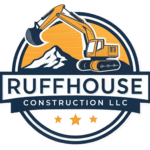When you’re planning a deep excavation, soil collapse can threaten your timeline and budget. Implementing shoring systems for deep excavation gives you sturdy ground support, minimizing risk. In this article, you’ll learn how soldier pile and lagging panel installations deliver reliable support for deep trenches and basement walls.
Understanding deep excavation shoring
Shoring holds trench walls in place and prevents soil collapse. You rely on robust systems to keep workers safe and schedules on track.
Effective ground support varies by application and site conditions. You can explore different excavation support systems to find the best fit.
What is a shoring system
A shoring system is a temporary or permanent structure that braces excavation walls. It transfers earth loads to stronger strata or supporting members.
Why shoring matters
Without proper shoring, trenches can cave in within seconds. OSHA reports that most collapses happen due to missing or inadequate protection, so you should follow excavation safety measures.
Assessing site conditions
Before choosing a shoring solution, you must assess soil type and groundwater. These factors affect your design and installation plan.
Classify soil types
Soil classification divides ground into Types A, B, and C based on cohesion and strength. A quick reference:
| Soil type | Characteristic | Soil loading at 10 ft |
|---|---|---|
| Type A | Cohesive, ≥ 1.5 tsf unconfined strength | 250 psf |
| Type B | Granular or less cohesive | 450 psf |
| Type C | Least cohesive, high moisture | 800 psf |
Consider water table impacts
High water tables can compromise trench stability. You may need dewatering methods or review excavation shoring solutions when water sits near your excavation base.
Exploring soldier pile and lagging
Soldier pile and lagging is a versatile shoring method for deep trenches and basement excavations. You’ll combine vertical soldier piles with horizontal lagging panels to brace walls.
Mechanism of soldier piles
Soldier piles are H-shaped beams spaced along the trench perimeter. You drive them into the ground to form a retaining framework.
Options for lagging panels
Lagging panels fill the gaps between piles and retain soil. You can choose timber, precast concrete, or steel options based on project needs. See lagging panel material options.
Planning installation process
A clear installation plan keeps your project safe and on schedule. Follow these steps to install soldier pile and lagging systems effectively.
Pre-planning and risk assessment
Begin with a site-specific risk assessment and excavation plan. You’ll review geotech reports and mark utility lines. See excavation shoring risk assessment.
Installing soldier piles
Use a rig to drill or drive piles at specified intervals. Keep pile alignment within tolerance to ensure uniform support. Learn more at soldier pile wall construction.
Installing lagging panels
Slide or stack lagging panels against piles as excavation proceeds. Secure each panel with nails or welds to prevent movement. Follow the lagging panel installation process.
Installing bracing and monitoring
Add internal bracing like hydraulic jacks or wales to transfer loads. Monitor for settlement, soil movement, and water infiltration daily. Check excavation shoring equipment for options.
Ensuring regulatory compliance
OSHA mandates protective measures before any excavation work. You must meet standards and keep records on site.
OSHA requirements
Follow OSHA’s excavation standards, such as Appendix A soil classifications and protective system criteria. Regular inspections by a competent person are required daily. Review excavation shoring regulations and excavation shoring standards.
Training and permits
Provide excavation shoring training to crews and document progress. Secure permits and maintain logs for audits. See excavation shoring training.
Why choose us
- Local expertise in WA and OR delivers prompt mobilization
- Decades of experience in soldier pile and lagging installations
- Comprehensive services from design through monitoring
- Commitment to safety with OSHA-compliant practices
When you’re ready to secure your deep excavation with proven shoring systems, contact RuffHouse Construction LLC for a consultation. We’ll guide you through design, permitting, and installation.
Frequently asked questions
-
What depth is suitable for soldier pile and lagging?
You’ll often use this system for excavations deeper than 10 feet, but shallow basements can also benefit. -
How long does installation take?
Typical schedules range from 2 to 5 days per 100 linear feet, depending on site conditions. -
What factors affect cost?
Soil type, depth, lagging material, and bracing method influence your overall investment. -
Can soldier pile and lagging handle high water tables?
Yes, with proper dewatering or combined sheet pile techniques you can manage groundwater. -
How often should inspections occur?
Daily inspections by a competent person are required, plus checks after major weather events.
Ready to start your own soldier pile wall project in Seattle, Tacoma, or anywhere in Puget Sound?
Learn how Ruffhouse Construction delivers safe, code-compliant soldier pile and lagging wall installations for any site.
See our Soldier Pile Installation Services for details and request a free estimate today.

